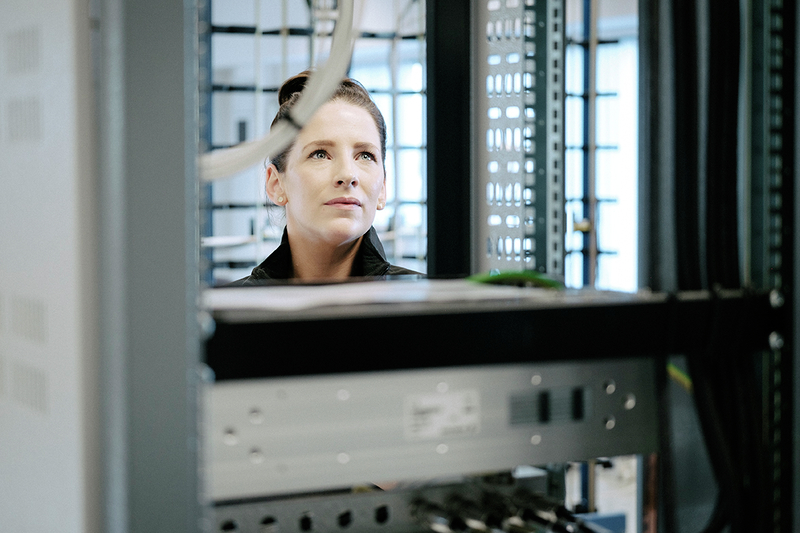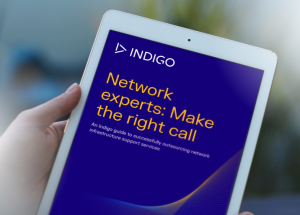Navigating the Generative AI Wave: Infrastructure Concerns and Challenges in 2023
There is plenty of chatter regarding video streaming services like Netflix and Facebook negotiating with network providers for equitable compensation. They argue that streaming and social media services consume considerable bandwidth. But now a fresh contender has entered the scene: generative artificial intelligence (AI).
This blog delves into the evolving landscape of network concerns, exploring the impact of generative AI on digital infrastructure in the year 2023.

As we plunge deeper into the era of AI, 2023 has undeniably emerged as the year where businesses and consumers alike have embraced this transformative technology on a daily basis. From creative content generation to personalized recommendations, the applications of generative AI are vast and continue to expand. However, this surge in usage has not come without its fair share of challenges, particularly for digital infrastructure providers who are grappling with the increasing strain on network capacity and processing power.
The Rising Tide of Generative AI
Generative AI, powered by providers like OpenAI, Google and Microsoft, has become an integral part of various industries. Businesses leverage it for content creation, chatbots, language translation, and much more. Consumers interact with AI-driven applications for personalized recommendations, entertainment, and even creative pursuits. While the benefits are substantial, the sheer volume of data and computational power required for generative AI tasks is pushing digital infrastructure providers to the limit.
Real-Time Processing Demands
 Generative AI applications often require real-time processing capabilities, especially in interactive scenarios such as chatbots or virtual assistants. This necessitates low-latency networks to deliver seamless and responsive user experiences. Network providers are under pressure to enhance their infrastructure to meet these demanding real-time processing requirements, ensuring that the interaction between users and AI models remains smooth and efficient.
Generative AI applications often require real-time processing capabilities, especially in interactive scenarios such as chatbots or virtual assistants. This necessitates low-latency networks to deliver seamless and responsive user experiences. Network providers are under pressure to enhance their infrastructure to meet these demanding real-time processing requirements, ensuring that the interaction between users and AI models remains smooth and efficient.
Edge Computing as a Solution
To alleviate the burden on central data centers and reduce latency, network providers are exploring the potential of edge computing. By distributing computational tasks closer to the end-users, edge computing can significantly enhance the performance of generative AI applications. However, implementing an effective edge computing infrastructure poses its own set of challenges, including hardware deployment, security considerations, and standardization. [Indigo can help keep those networks running efficiently with our field engineering services]

Security and Privacy Concerns
As generative AI becomes more deeply integrated into various applications, the amount of sensitive data being processed and transmitted across networks increases. This raises significant security and privacy concerns for both businesses and consumers. Network providers are tasked with implementing robust security measures to safeguard the integrity of the data flowing through their systems.
The Road Ahead
Addressing the network concerns associated with the widespread adoption of generative AI requires a multi-faceted approach. Digital infrastructure providers must invest in upgrading network capacities, exploring innovative solutions like edge computing, and prioritizing security to ensure the seamless integration of generative AI technologies.
Network Capacity Concerns
One of the primary challenges faced by network providers is the exponential growth in data traffic caused by the widespread adoption of generative AI. These models, often massive in size, demand substantial bandwidth for both training and deployment. As more businesses integrate generative AI into their operations and consumers engage with AI-driven services, the strain on network capacity becomes increasingly apparent.
Need for innovation and adaptation
While 2023 has undoubtedly marked the ascendancy of generative AI, the challenges faced by digital infrastructure providers highlight the need for ongoing innovation and adaptation. As businesses and consumers continue to harness the power of AI for diverse applications, the collaboration between technology developers, businesses, and network providers becomes crucial to building a resilient digital ecosystem that can support the demands of the generative AI era.
Maximizing network uptime
If you are looking for reliable support providers to enhance the uptime of your networks, Indigo offers design, deployment, and support services to assist you. Our Services include a Global Service Desk and Field Engineering Services delivered in over 90 countries.
- DESIGN. Collaborating with you, we can design a future-ready network that anticipates and adapts to upcoming trends and demands.
- DEPLOY. We use all our expertise to tackle well-known bottlenecks to install, test and optimize infrastructure.
- SUPPORT. Our trusted partnership approach helps diagnose and fix faults faster and monitors, maintains, and upgrades digital infrastructure.
As we celebrate 25 years in business we are happy to offer you a free eBook. 
For tips on what to look for in a network support service provider, download our free Network Infrastructure Support eBook today.
